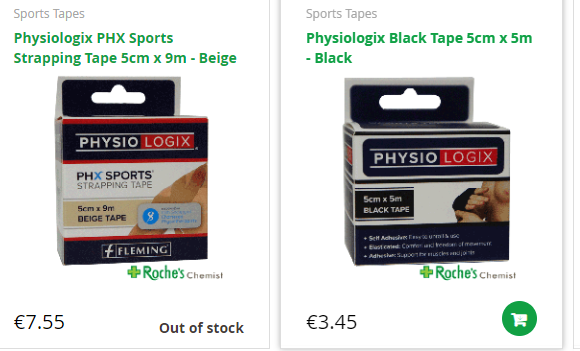For many athletes, the vibrant strips of colored tape seen on shoulders, knees, and backs have become a familiar sight. This is kinesiology tape, a therapeutic tool designed to offer support and pain relief while allowing for a full range of motion.
Kinesiology tape differs from traditional athletic tape in a few key ways. Traditional tape is often rigid and used to restrict movement, particularly to aid healing after an injury. Kinesiology tape, on the other hand, is elastic and designed to mimic the natural elasticity of human skin. This allows for support without sacrificing mobility.
The Science Behind the Stretch
The exact mechanism of how kinesiology tape works is still being researched, but there are several theories. One theory suggests that the tape lifts the skin slightly, creating more space between it and the underlying tissues. This increased space may improve lymphatic drainage, which helps reduce swelling and inflammation. Additionally, the tape may provide proprioceptive input, which is information the body receives about its position and movement. This input can help improve neuromuscular control and stability.
Benefits of Kinesiology Tape
Athletes and therapists use kinesiology tape for a variety of purposes, including:
· Pain Relief: Kinesiology tape may help to reduce pain from various conditions, including muscle strains, joint pain, and headaches. It is believed to work by reducing inflammation and improving blood circulation.
· Improved Performance: Some studies suggest that kinesiology tape can enhance athletic performance by improving muscle function and reducing fatigue.
· Injury Prevention: Kinesiology tape can be used to provide support to weak muscles or joints, which may help to prevent injuries.
· Enhanced Recovery: Kinesiology tape may promote faster healing by improving blood flow and reducing inflammation.
· Postural Support: Kinesiology tape can be used to help improve posture by providing gentle cues to the body.
While research is ongoing, many athletes swear by the benefits of kinesiology tape. However, it's important to note that the tape is not a magic bullet. It should be used in conjunction with other treatment modalities, such as physical therapy, for optimal results.
Kinesiology Tape Applications
Kinesiology tape can be applied in various ways depending on the desired outcome. There are pre-cut tapes available for common applications, but a healthcare professional can also show you how to apply the tape for specific needs. Here are some common applications:
· Knee Pain: Kinesiology tape can be used to support the patella (kneecap) or reduce pain from conditions like patellofemoral pain syndrome (runner's knee).
· Shoulder Pain: Taping can help improve shoulder stability and reduce pain from rotator cuff injuries.
· Back Pain: Kinesiology tape can be used to support the lower back muscles and improve posture.
· Shin Splints: Taping the shin can help reduce pain and inflammation associated with shin splints.
· Plantar Fasciitis: Kinesiology tape can be applied to the arch of the foot to provide support and pain relief for plantar fasciitis.
Who Can Benefit from Kinesiology Tape?
Kinesiology tape can be a helpful tool for athletes of all levels, as well as for people who experience pain from everyday activities. However, it's not suitable for everyone. Here are some things to consider:
· Skin Conditions: If you have any skin conditions, such as eczema or psoriasis, kinesiology tape may irritate your skin.
· Allergies: If you have allergies to latex or adhesive, kinesiology tape may not be right for you.
· Open Wounds: Kinesiology tape should not be applied to open wounds or broken skin.
If you are considering using kinesiology tape, it's always best to consult with a healthcare professional first. They can help you determine if it's appropriate for you and show you how to apply it correctly.
Applying and Removing Kinesiology Tape
Kinesiology tape is available for purchase online and at many sporting goods stores. When applying the tape, it's important to follow the manufacturer's instructions carefully. Here are some general tips:
· Clean and dry the area where you will be applying the tape.
· Round the corners of the tape to prevent them from peeling up.
· Apply the tape with the desired amount of tension.
· Rub the tape to activate the adhesive.
· To remove the tape, gently peel it back in the direction of hair growth.
Kinesiology tape is typically designed to stay on for several days, even through showering and sweating. However, if you experience any skin irritation, remove the tape immediately.
Kinesiology Tape vs. Traditional Athletic Tape
As mentioned earlier, kinesiology tape differs from traditional athletic tape in a few key ways:





Comments